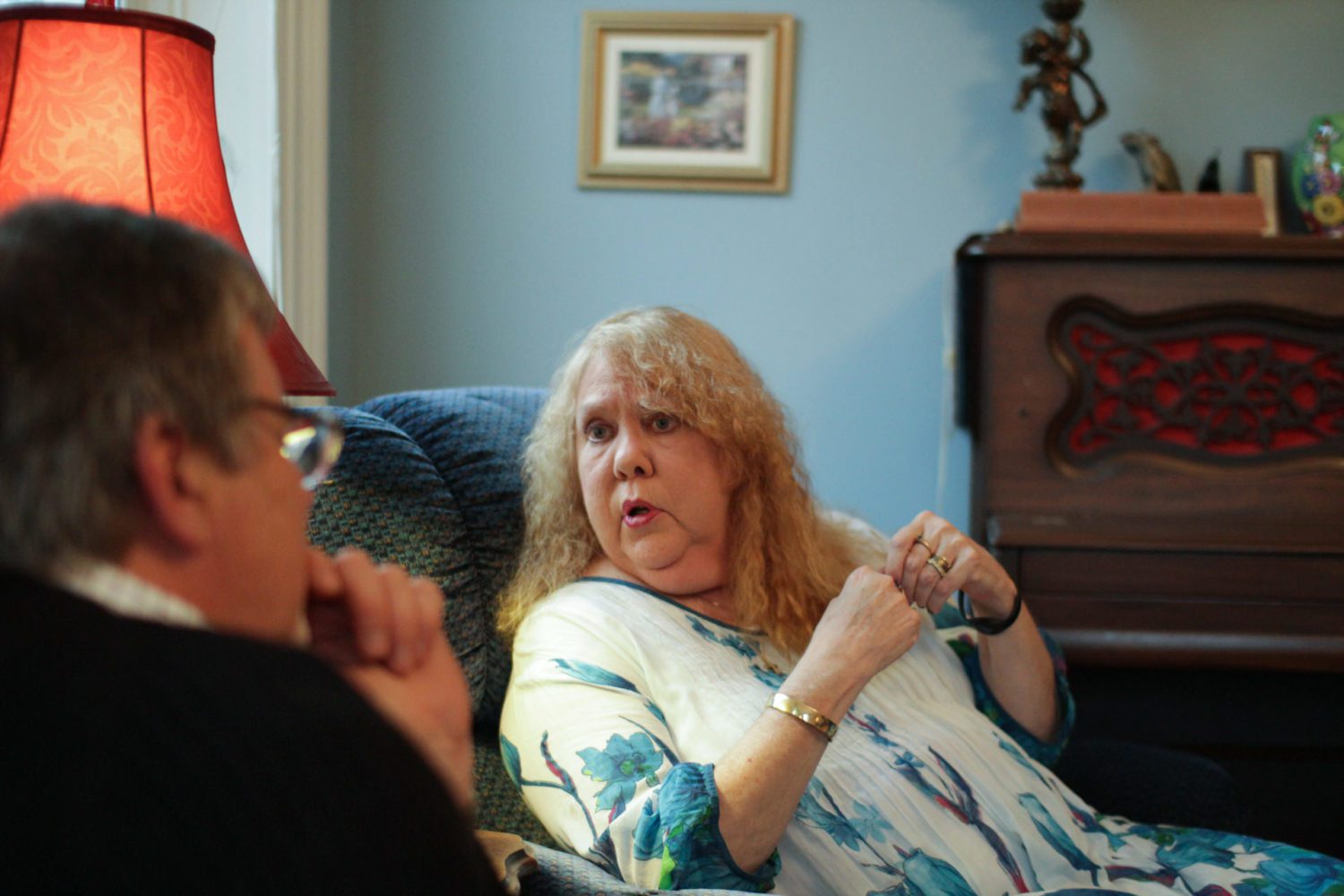Pam lives in a small town and has a rare disease that predisposes her to severe infections.
“My family physician called and said, ‘There’s a new program called Health Links. Would you be interested?’ I said, ‘By all means.’ So, a nurse practitioner came to see us and she was a Godsend. She orchestrates everything, coordinates everything. She’s like a little machine, like wound up. You pull the string and away she goes! She was in here like a whirlwind and the next thing I know, I’ve got all these people calling me. She goes out and takes care of the problems. We found out through our experiences that a lot of problems get bogged down by paper work. She deals with that.”

“Our nurse practitioner wanted to know what the stressors were in our life. So, the first thing I said was ‘income tax.’ I am really concerned about it, because Wayne has a small business and that makes income taxes complicated.”
When you are not well, everything can be an effort.
“I have boxes of receipts. So, our nurse practitioner arranged for a gentleman to do our income taxes pro bono.”
“She just knows what’s available. Our income tax hasn’t been done in years.”

“There is a fantastic paramedic program in this area. I have their weigh scale, blood pressure machine, pulse monitor, glucometer – all my vitals are transmitted to them first thing every morning. If anything is out of my personal range, I receive a phone call. If my heart rate is too fast, they know that I’m at risk of getting sepsis and that sepsis increases the heart rate, so they’ll ask, ‘Do you have a fever? How are you feeling?’ If I don’t answer the phone, they come to the door. In September I had three admissions to emerg and they were the ones who decided I needed to go after visiting. But they can also help me avoid trips to the hospital by addressing something before it’s an emergency.”
I have this bracelet with a microchip in it, so when the paramedics come they scan my bracelet and all of my information comes up.
“My allergies, the medications I am on, previous diagnoses and so forth. Because I had so many visits to emerg, I was enrolled in this program.”

PAM: “I am feeling much better now, so I think I will be Christmas shopping. I will do my own Christmas shopping, instead of doing it online. I will actually go into a store and see the Christmas decorations.”
WAYNE: “One time Pam was depressed in the hospital, and I figured it would be a good thing to bring her the laptop. I said, ‘While you’re online, buy yourself some stuff.’ And I look at the bill about a week later, and there is a whole bunch of jewelry!” {Laughter}.
PAM: “Well, it wasn’t that bad.”
WAYNE: “It was all right. But the mailman got a kick out of it. After a while, he said, ‘Wayne, I think she’s almost done!’”

“The physicians in the hospital here, they know my immune system is low, so they get me out of the waiting room and see me right away. I am not waiting, you know, five hours to be diagnosed when that time is really critical. The hospital staff are educated about me, and I know them. It works really, really well. The large hospitals have nurses who bounce all over the hospital. Here, it’s pretty much the same staff in emerg. They know everybody in the community. So, that really works well.”
It is community health care versus mega health care.
“My main objective is to inspire others and provide some hope in such an ever changing medical care system. Due to budget restrictions, institutions, physicians, and patients have all had to evolve. We as patients must now take more responsibility for our own well-being by making use of all available medical resources. After much research, and with the aid of my family physician, and coordinators in the community, I was able to enroll in half a dozen provincially funded programs. I encourage others to ‘fight a good fight’ with the aid of all available resources.”

“It’s good to have an organization outside the hospital, sort of like a conductor, who fills in all the little holes. I mean, there were so many people involved, but no one brought them all together. The nurse practitioner plugged all the holes, and now knows Pam really well. So, it is like the complete system. This isn’t meant for everybody, but those people that are, I guess you would class them as a burden on the health care system. Like in 36 months, Pam was in hospital for 217 days, I think. Things are better now. There are things we can do ourselves, like the home immunoglobulin infusions, and you always feel better in your own home.”


The comments section is closed.